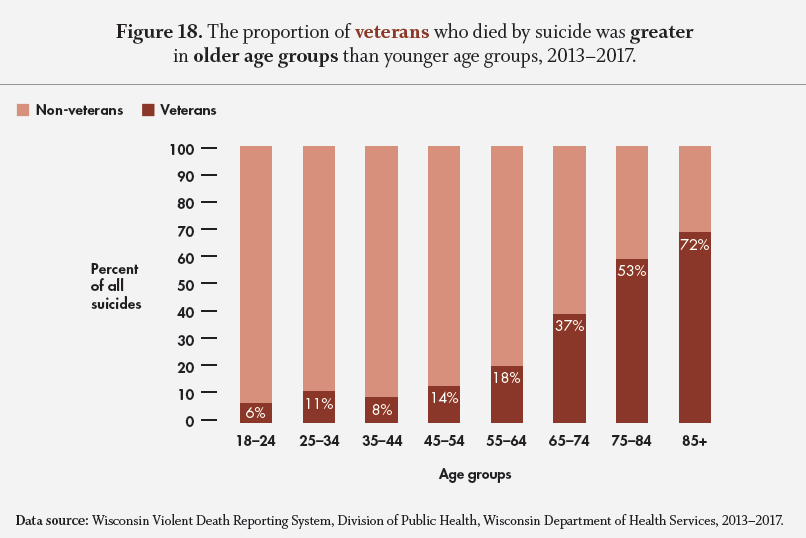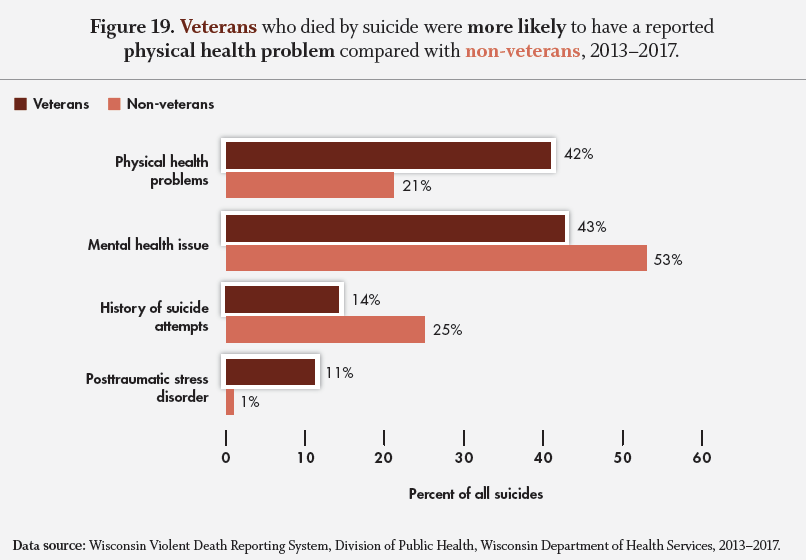Veterans (defined in this report as individuals with current or previous military service) often experience higher rates of negative health outcomes, including posttraumatic stress disorder, substance use disorder, depression, and suicide.5 From 2013–2017, 714 veterans died by suicide, which accounted for approximately 1 in every 5 Wisconsin suicides.
The average age of veteran suicide deaths (59) was significantly higher when compared to non-veteran suicide deaths (43). Veterans were also significantly more likely to use a firearm (70% of all veteran suicides) as the method of suicide and be male (97% of all veteran suicides) when compared to non-veterans. Among non-veterans, 45% of all suicide deaths used a firearm and 75% were male.

Figure 18. The proportion of suicides that were veterans increased with age from 2013–2017. For example, 8% of suicides among those ages 35–44 were veterans and 72% were veterans among those ages 85 or older.

Figure 19. Veterans were significantly more likely to have a reported physical health problem when compared to non-veterans from 2013–2017. They were significantly less likely to have a mental health issue or history of suicide attempts reported when compared to non-veterans. Posttraumatic stress disorder was also significantly more common among veterans who died by suicide when compared to non-veterans.